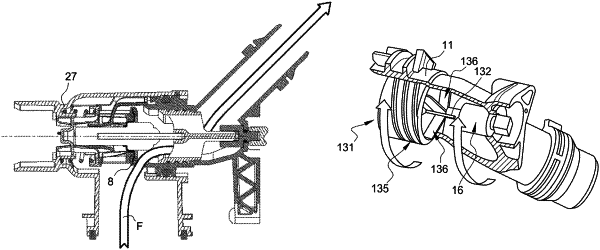|
1. A thermostatic valve comprising: a hollow body, a first opening and a second opening leading into the body and being hydraulically connected by a through section, and a plug disposed at least partially in the through section and comprising a thermostatic actuator, a biasing component, a flap configured to open the first opening when actuated by the thermostatic actuator and of closing the first opening when biased by the biasing component, in which the thermostatic actuator comprises a cylinder containing an expansion material, having a volume that increases beyond a threshold temperature, and a rod defining an axial direction, a relative displacement between the cylinder and the rod along the axial direction being able to occur under the action of the expansion material, wherein the rod bears at one of its ends against an abutment element, said abutment element being displaceable under the action of a displacement assembly towards the cylinder so as to enable the opening of the first opening when the temperature of the expansion material is lower than the threshold temperature, said displacement assembly being at least partially disposed inside the through section, wherein the displacement assembly is configured to displace the abutment element along the axial direction defined by the rod, and wherein the abutment element comprises a hollow cylindrical ring having at least one groove on an outer boundary, said groove defining a tapped portion, and a central hub connected to said ring by radial fins, said central hub being aligned with the rod and in contact therewith, and wherein the displacement assembly comprises an electric actuator configured to displace the central hub in rotation about an axis parallel to the axial direction and at least one raised protrusion formed on the inner boundary of the body, said protrusion defining a threaded portion into which is screwed the tapped portion of the ring such that the rotational displacement of the central hub causes the translational displacement along the axial direction of the abutment element.
|
